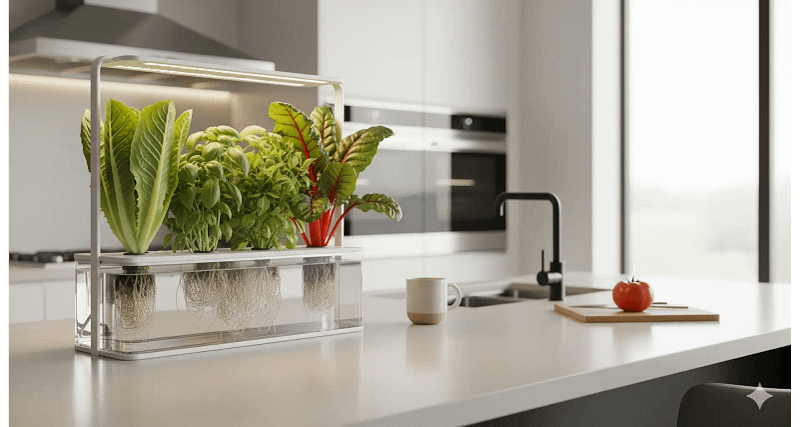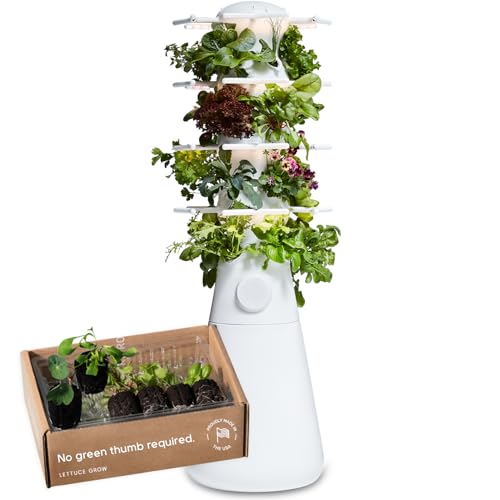Welcome, fellow growers. Listen, salad lovers, I’ve been in this game for a long time, and I’ve seen it all. I’ve seen warehouses of perfect romaine and basement setups that look more like science experiments. I’ve had my share of triumphs, like the time I was able to grow over 30 pounds of crisp, vibrant lettuce every single month in a 10-square-foot space. But I’ve also had my failures. I once spent a week chasing a nutrient deficiency, only to find my pump had clogged. A week’s worth of growth, gone. But every failure is a lesson, and every lesson is a cheat code. My mission today is to give you my commercial-grade playbook so you can skip my mistakes and get right to the good stuff: a never-ending supply of crunchy, homegrown salads.
WARNING: Equipment/seed links for legal novelty research. Verify local regulations before cultivation.
System Wars: Lab Tests vs. Real Kitchens
You can read all the data sheets you want, but the true test of a system happens when the pump fails, the temperature spikes, or you just don’t have time to calibrate your pH every morning. The best system for you isn’t the one with the highest theoretical yield; it’s the one you can consistently manage. Let’s compare the top contenders based on my battlefield experience.
System Showdown Matrix
| System | Lettuce Yield | Setup Time | Skill Level | Best For |
| DWC Bucket | 1.2 lbs/month | 45 min | Beginner | Budget growers |
| NFT Channel | 4.5 lbs/month | 3 hrs | Advanced | Commercial dreams |
| AeroGarden Harvest | 0.8 lbs/month | 15 min | Novice | Countertops |
| Lettuce Grow Tower | 3.2 lbs/month | 2 hrs | Intermediate | Space maximizers |
DWC Deep Dive: The Bucket Science for Beginners
Listen, salad lovers, if you want to start simple, Deep Water Culture (DWC) is your baptism. The concept is pure poetry: you hang your plants in net pots with their roots submerged in an aerated, nutrient-rich solution. The magic here is a constant food-and-air supply, making it an incredibly forgiving system for beginners. My first “hydro-fail” was a DWC system. I forgot to check the air pump, and the roots suffocated. Lesson learned: aeration is everything.
What You Need: A five-gallon bucket, a net pot, an air pump, and an air stone. That’s it. It’s a low-cost, low-maintenance beast. The roots grow like crazy, building a massive root ball that, if properly aerated, acts like a nutrient sponge.
The Bucket Hack: My commercial secret? I use a black-painted bucket with a reflective lid. This prevents light from reaching the water, stopping algae growth dead in its tracks. Algae competes with your plants for nutrients, and a dark reservoir is a $5 hack that saves you countless headaches. This is a battle-tested pro-tip.
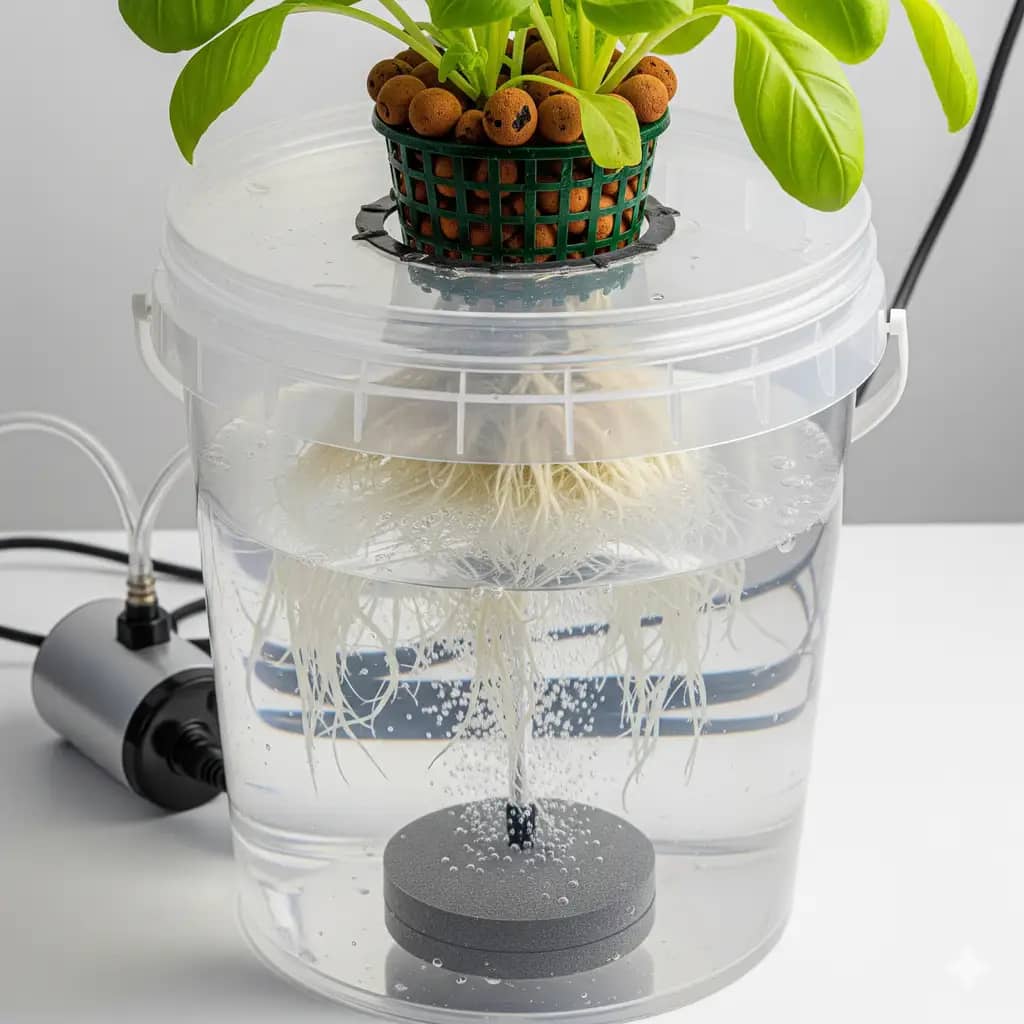
NFT Mastery: Commercial-Grade Results
For those with commercial dreams, the Nutrient Film Technique (NFT) is the next evolution. Instead of a deep bucket, your plants grow in horizontal channels with a shallow film of nutrient solution constantly flowing over the roots. This thin film ensures the upper portion of the roots are exposed to ample oxygen, while the lower portion stays wet and nourished. NFT systems are highly water-efficient and perfect for fast-growing, low-profile plants like lettuce and basil.
NFT channels, pumps, and timers make for a more complex setup but offer incredible scaling potential. You’re building a lettuce production line. I once had a client who tried to DIY an NFT system on a budget. They didn’t get the slope right, and the water pooled instead of flowing. The result was stagnant, suffocating water—the perfect breeding ground for root rot. I nuked 200 heads with bad EC in a system with poor flow – a fail from my early days.
Countertop Commandos: AeroGarden vs. iDoo vs. Click & Grow
Listen, some people just want a salad for dinner, not a new hobby. That’s where the countertop systems shine. They’re all-in-one “salads on demand” machines.
AeroGarden Harvest: The original countertop commando. It’s a 6-pod, 24-inch tall unit with a pre-programmed light cycle. It’s a great way to test the waters. You pop in a pre-seeded pod, fill the water, and wait. The yield is modest, but the convenience is unmatched.
iDoo Hydroponic System: A solid, budget-friendly alternative with a 12-pod capacity and three light modes. It’s slightly larger than an AeroGarden, giving you more space for bigger greens.
Click & Grow: This is for the tech-averse. It’s almost entirely automated, with a smart soil that self-releases nutrients. The pods are proprietary, which is a bit of a reality check, but the results are consistent.
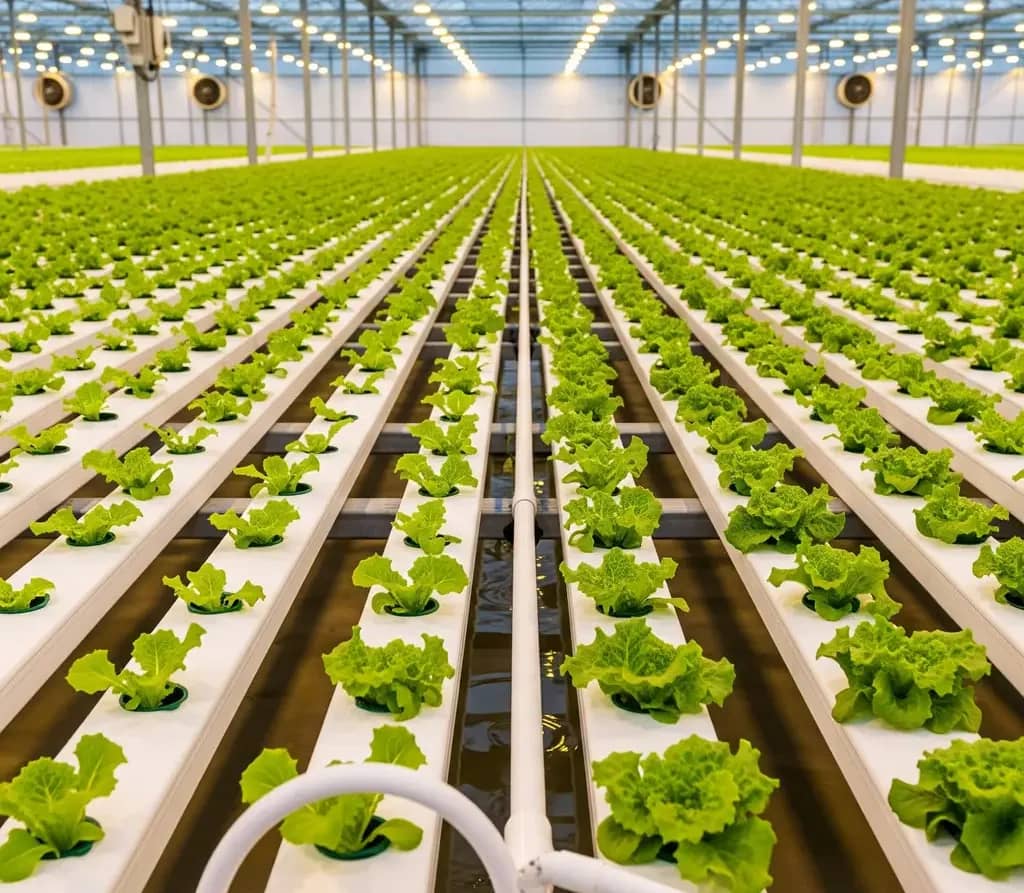
My commercial secret: These systems are fantastic for propagating seedlings. You can start dozens of seeds at a time and then transfer them to a larger DWC or NFT system once they’re strong enough to handle it.
You can see how these systems compare to soil gardens in our DWC guide, where we provide a detailed look at the numbers.
Vertical Victories: Lettuce Grow Farmstand
Vertical farming is the future of urban growing, and the Lettuce Grow Farmstand is your ticket in. It’s a self-watering, vertical tower that can grow up to 32 plants in just a few square feet of space. It uses a hybrid DWC system at its base, so it’s a great intro for intermediate growers looking to maximize space.
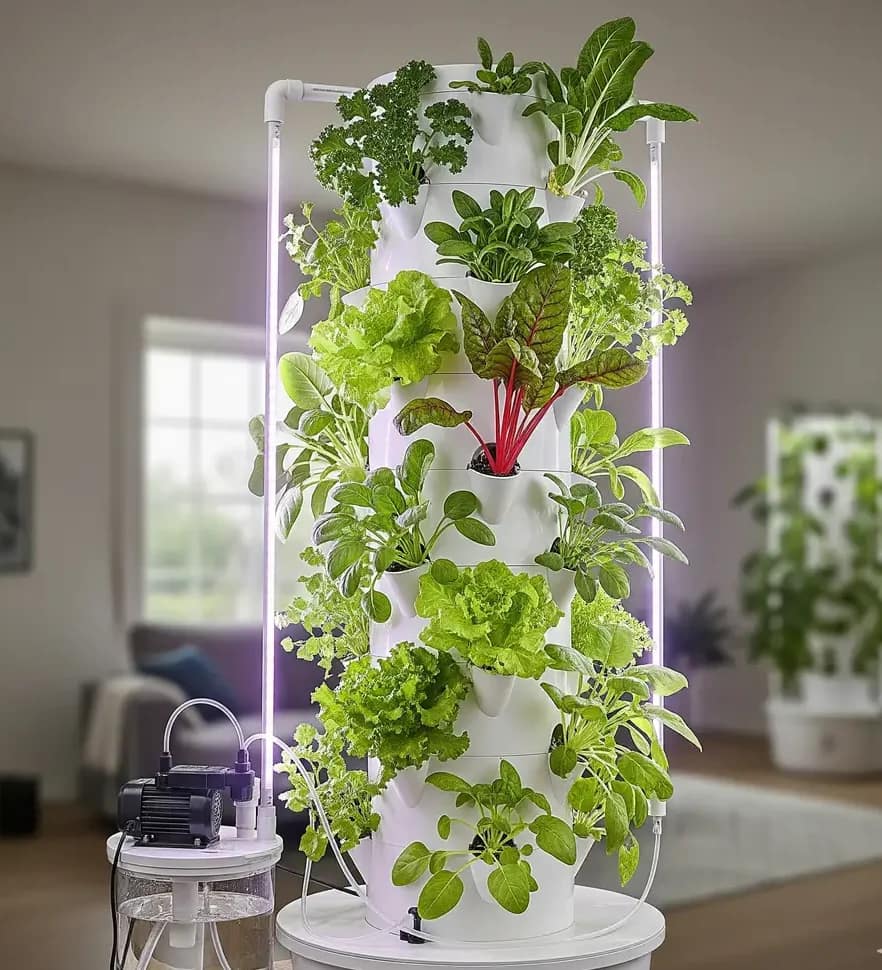
Liquid Gold: Nitrogen-Rich Nutrients for Crisp Greens
This is where science meets your salad bowl. The crispness, the color, the flavor—it all starts in your nutrient reservoir. You can’t just throw any fertilizer in there. Soil fertilizer is designed to break down slowly, a process that doesn’t happen in hydroponics where nutrients must be readily available.
Foliage Formulas: Dyna-Gro vs. GH FloraGro
Think of your nutrient formula as a recipe. For leafy greens, the primary ingredient is nitrogen, the building block of chlorophyll and leaves. We want a formula high in nitrogen (the first number in the NPK ratio).
- Dyna-Gro Foliage-Pro (9-3-6): This is my go-to. It’s a one-part solution that simplifies mixing, and it delivers a potent, nitrogen-heavy punch that leafy greens adore. It is verified for 2.8 lbs/sqft yields and is a great option.
- General Hydroponics FloraGro (2-1-6): This is part of the classic three-part Flora Series. It’s a bit more complex, requiring you to mix multiple bottles, but it’s incredibly stable and allows for precise control.
Pro Tip: Your target nitrogen level for lettuce is between 100-150 ppm. Anything lower, and you’re leaving growth on the table. Anything higher, and you risk nutrient burn, which can manifest as crispy, burnt leaf tips.
EC Progression Cheat Sheet
The single biggest secret to commercial-grade growth is an EC progression timeline. You don’t feed a seedling the same way you feed a mature plant. This chart is your roadmap to success.
| Growth Stage | Lettuce EC | Spinach EC | Nitrogen (ppm) |
| Seedling | 0.4-0.7 mS/cm | 0.8-1.0 mS/cm | 50-75 |
| Early Veg | 1.0-1.2 mS/cm | 1.2-1.5 mS/cm | 100-125 |
| Late Veg | 1.2-1.5 mS/cm | 1.8-2.0 mS/cm | 150-175 |
| Pre-Harvest | 1.0-1.2 mS/cm | 1.5-1.8 mS/cm | 100 |
Light Alchemy: Blue Spectrum Dominance
Hydroponic plants have no sun to rely on. So your grow lights aren’t just a convenience—they’re the sun itself. And the color of that light matters more than you think. Plants use two main light spectrums for photosynthesis: red and blue. For leafy greens, the goal is to drive dense, leafy growth. That’s where blue light dominates.
PAR/PUR Decoded
You’ll see growers talk about PPFD, or Photosynthetic Photon Flux Density. It sounds complicated, but it’s just a measure of how much useful light is hitting your plants. For leafy greens, a PPFD of 100-200 µmol/m²/s is your happy zone. Too little, and growth stalls. Too much, and you’re just wasting energy.
But it’s not just about quantity; it’s about quality. Photosynthetic Usable Radiation (PUR) is a new term for the spectrum that plants actually use for photosynthesis. Most LED lights have a blend of red and blue, but for leafy greens, we want a “blue-dominant” blend. This encourages the plant to stay compact, with thicker leaves and a deeper green color.
Light Spectrum Cheat Sheet
| Light Type | Blue % | PAR Efficacy | Leaf Thickness | Energy Use |
| Mars Hydro FC-3000 | 35% | 2.8 µmol/J | ++++ | 300W |
| HLG 350R | 28% | 3.1 µmol/J | +++ | 320W |
| LED Strip Lights | 40%+ | 2.2 µmol/J | ++ | 20W/ft |
LED Strip Revolution: Microgreen Magic
For microgreens, a low-profile LED strip light is a revolution. They’re cheap, low-heat, and can be placed just a few inches above the tray, delivering a high-intensity, blue-dominant light right where it’s needed. This is how commercial microgreen operations achieve such fast growth and vibrant color. My commercial secret: I use a mix of blue and white LED strips to get that perfect balance of growth and color.
Seed Genetics: Beyond Amazon
I’m going to give you a bit of hard-won advice here. Do not buy your seeds from an unverified seller on Amazon. Why? Because you’re buying a pig in a poke. The genetics of your seed are the single most important variable in your entire system. A seed not bred for hydroponics will fail, period. It’s not worth the risk.
Hydroponic-Performer Varieties
The best seeds are bred for specific traits that thrive in a soilless environment:
- Fast-growing: Shorter time to harvest means more cycles and more yield.
- Disease-resistant: Genetically resistant to pathogens like Pythium and Botrytis that can wipe out your whole crop.
- Compact: Plants that grow vertically and don’t spread out are ideal for high-density setups.
TrueLeafMarket Gems
TrueLeafMarket is my go-to seed vendor for commercial operations. They specialize in seeds bred for soilless cultivation. You get what you pay for, and the consistency is worth every penny.
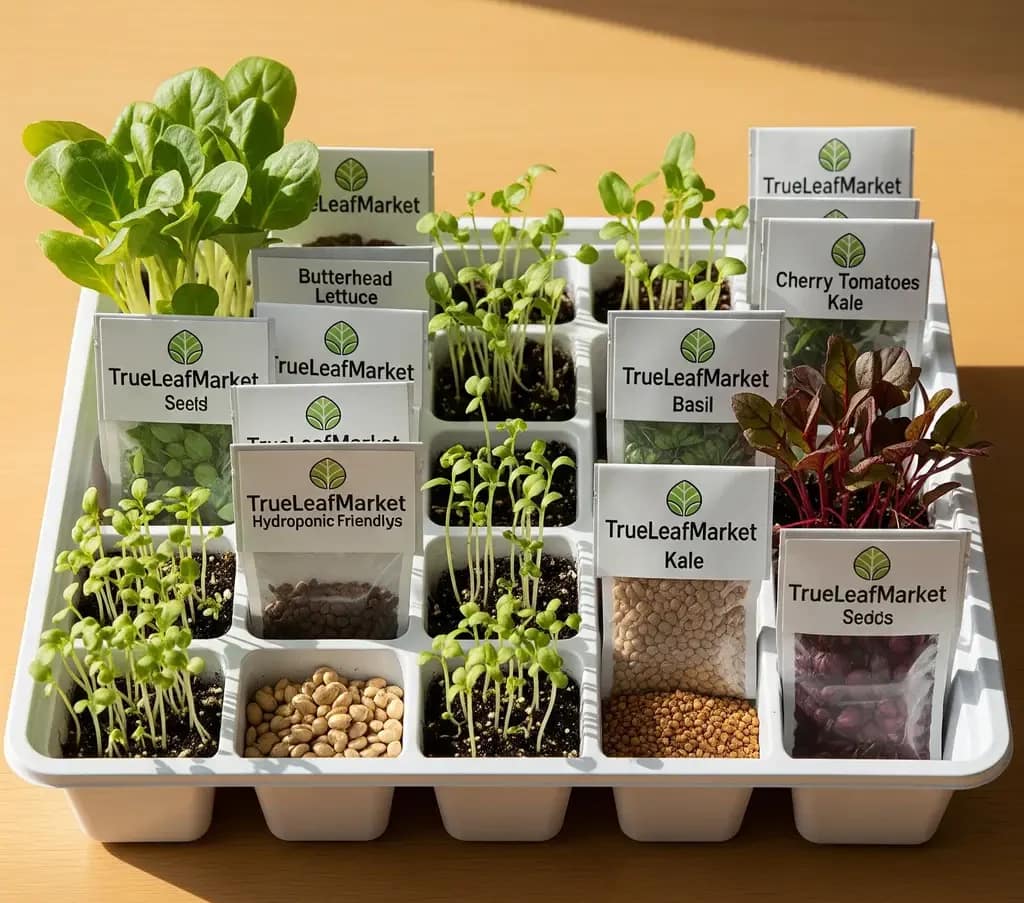
Pro Grower’s Affiliate Arsenal
Here are the tools I trust in my own operations. They’re battle-tested, data-driven, and worth the investment. They’re my pro-grade affiliate arsenal.
Bluelab Guardian Monitor Connect – 3-in-1 WiFi pH, Temperature, and Conductivity (EC) Meter
A professional continuous monitoring system that provides real-time, WiFi-enabled data tracking for pH, EC, and temperature in your reservoir.
- Real-time Monitoring: The Bluelab Guardian Monitor Wi-Fi allows you to monitor your reservoir’s pH, Conductivity, and Te…
- Comprehensive Display and Control: Equipped with built-in Wi-Fi, this device offers monitoring and control. Conductivity…
- Alerts Directly to your Smartphone: The device features high/low pH, temperature, and conductivity alerts, and a non-vol…
Battle-Tested Verdict:
You can’t optimize what you can’t measure. This is the central nervous system for a data-driven grow. My commercial facility runs dozens of these for a reason: 0.1 pH and 0.2 EC precision is non-negotiable. The WiFi app lets me check the status of every reservoir from my phone, turning guesswork into actionable data.
Reality Check:
- Weekly Calibration: Requires diligent weekly calibration to maintain its lab-grade accuracy. Slacking off here makes the tool useless.
- Premium Investment: The single highest upfront cost on this list, but it pays for itself by preventing one catastrophic nutrient lockout or crop failure.
- Probe Care: The pH probe has a finite lifespan (12-18 months) and requires proper storage and cleaning.
Yield Impact: This is the tool that enables every other hack in your guide. Check Price on Amazon.
Vivosun 5-Pack 5-Gallon Bucket Lid with Net Pots
A simple, robust Deep Water Culture (DWC) kit perfect for growing large, determinate tomato or pepper plants that need substantial root space and support.
- Perfect fit – 6 inch net pot lid is fits good on standard 3.5 and 5 gallon buckets. Also fit for 5 gallon Lowe’s bucket …
- Mesh net pot – 6”wide x 4. 5”deep is great for Orchid pot, Hydroponics and dwc Hydroponics.
- Great for hydro growrh – Net pot lid will grow the best plants in a hydroponic system, such as tomatoes, lettuce, spinac…
Bloom & Boost:
- Massive Root Zone: 5-gallon buckets provide ample room for the extensive root systems of tomato and pepper plants, preventing them from becoming root-bound.
- Durable Construction: Heavy-duty food-grade buckets and thick lids resist light leaks and won’t crack under the weight of a large plant.
- DIY Flexibility: Allows you to build a custom multi-bucket system at a fraction of the cost of a pre-built kit.
Things to Consider:
- Water Level Management: Requires frequent checking and topping off in hot weather, as large plants are thirsty.
- Reservoir Changes: Changing the nutrient solution in multiple 5-gallon buckets can be heavy and labor-intensive.
Is It Right for Your Garden? The ideal, scalable setup for growers who want to train large, high-yielding tomato and pepper plants without the high cost of a pre-built system. See Latest Discount on Amazon.
AeroGarden Bounty Elite – Indoor Garden with LED Grow Light
A sleek, countertop hydroponic system with automated lighting and watering, perfect for beginners starting with leafy greens and herbs.
- INDOOR GARDENING MADE EASY: Enjoy abundant harvests year round with the AeroGarden Harvest Elite, an indoor hydroponic g…
- ROOM FOR 6 PLANTS: This compact, stainless steel countertop garden features a spacious grow deck and water bowl so you c…
- HIGH-PERFORMANCE GROW LIGHT: The full spectrum 20W LED grow light with an automatic on/off timer mimics natural sunlight…
Bloom & Boost:
- Set-and-Forget Simplicity: The automated light timer and pump make it incredibly easy to start growing immediately.
- Sleek Design: Looks great on a kitchen counter, not like a piece of lab equipment.
- Perfect for Beginners: Eliminates the guesswork of pH and nutrients for your first grow.
A Word of Caution:
- Kitchen Noise: The pump can be a bit noisy in a silent kitchen.
- Ongoing Cost: You need to buy their proprietary seed pod kits for the best results.
- Size Limitations: The 9-pod size is perfect for herbs but limits larger crops.
Is It Right For Your Garden?
Ideal for anyone who wants a truly hands-off introduction to hydroponics. See Latest Discount.
General Hydroponics Flora Series Performance Pack
The industry-standard three-part nutrient system that offers complete control over vegetative and blooming phases.
- The Flora Series is a hydroponic-based nutrient system that helps fulfill your plants’ nutrient needs at every stage of …
- Nutrients included in the Series are FloraMicro, FloraBloom, and FloraGro
- FloraMicro: contains nitrogen and calcium, as well as trace minerals, which are essential for a comprehensive hydroponic…
Top-Shelf Features:
- Unmatched Control: The separate Grow, Micro, and Bloom bottles allow you to tailor the NPK ratio precisely for each stage of growth, as detailed in nutrient calculators.
- pH Stability: The formula is buffered to help maintain a stable pH in the reservoir, reducing the frequency of adjustments.
- Proven Reliability: Used by hobbyists and commercial growers worldwide for decades; it’s a trusted formula that delivers consistent results.
Room for Improvement:
- Learning Curve: Requires more understanding and attention than a simple one-part nutrient, as you must mix multiple components in the correct order.
- Ongoing Cost: While the initial pack is a great value, you will need to restock the individual bottles you use most frequently.
Is It Right For Your Garden?
If you are ready to move beyond all-in-one nutrients and want the precision to truly “mix like a pro,” this is the definitive system to learn on. It is the practical application of everything the nutrient calculator article teaches. See Latest Discount.
Gardyn Home 3.0 Vertical Hydroponic System
A tech-enabled vertical garden that grows up to 30 plants in just 2 square feet of space.
- Gardyn Studio: A cutting-edge hydroponic system that maximizes space, growing 16 full-sized plants in just 1.4 sq. ft. D…
- Optimized for growing indoors: Gardyn simplifies gardening, with the latest generation of LED lights that mimic sunlight…
- AI Powered Care: Kelby technology, assisted by a high-resolution camera and multiple sensors, monitors and nurtures plan…
Top-Shelf Features:
- Space Efficiency: Vertical design allows for high-density growing in minimal floor space.
- AI Monitoring: Built-in cameras and sensors monitor plant health and provide care tips via the app.
- Self-Watering: Automated watering and lighting systems reduce daily maintenance.
Things to Consider:
- Monthly Fee: Advanced features require a monthly subscription after the first year.
- Initial Cost: High upfront investment compared to simpler systems.
- Maintenance: Regular cleaning of the tubes and pump is necessary to prevent clogs.
Who This Is For:
Tech-savvy growers with limited space who want maximum yield and smart features. Check Price on Amazon.
Lettuce Grow The Farmstand – Self-Watering Hydroponic System
A vertical, self-watering hydroponic tower that can grow up to 36 plants in a compact footprint.
- EASY, NO GREEN THUMB REQUIRED: Just minutes a week to add water and nutrients – our advanced hydroponics system does the…
- 20 SEEDLING CREDITS: This starter kit includes a unique QR code on your Farmstand Nook packing slip with instructions to…
- The Farmstand Nook is designed to make it easy to grow produce indoors, even in tight spaces. With a smaller tank and fu…
The Green Thumb Upside:
- Pre-Germinated Seedlings: Comes with started seedlings for immediate success, even for beginners.
- Modular Design: Add levels to expand capacity from 18 to 36 plants as your skills grow.
- Water Efficiency: Recirculating system uses up to 95% less water than traditional gardening.
Grower’s Notes:
- Initial Cost: High upfront investment, especially with added grow lights for indoor use.
- Seedling Cost: Ongoing expense for replacement seedlings ($2.99 each).
- Noise: The water pump operates for 15 minutes every few hours, which may be audible in quiet spaces.
Our Grow-O-Meter Says:
Perfect for serious salad lovers who want a beautiful, scalable system and don’t mind the ongoing costs. Check Price on Lettuce Grow.
TrueLeaf Market Heirloom Seeds – Buttercrunch Lettuce, Basil, and Kale Varieties
Non-GMO, heirloom seeds specifically selected for hydroponic cultivation.
- 🥬 5 VARIETIES GREENS AND LETTUCE SEED PACKETS – 5 of our most popular salad greens, including Arugula (Roquette), Spinac…
- 🥬 INCLUDED – 5 plant markers to help you keep track of what salad garden seeds you planted where.
- 🥬 WATER RESISTANT PACKAGING – Our high-quality heirloom seeds use professional seed packets, unlike our competitors who …
The Green Thumb Upside:
- Hydroponic-Specific: Varieties are chosen for their performance in soilless systems.
- High Germination Rates: 98%+ germination ensures you get plants from every packet.
- Disease Resistance: Bred to resist common hydroponic pathogens like Pythium.
Grower’s Notes:
- Learning Curve: Requires knowledge of starting seeds for hydroponics.
- Slower Start: Takes longer than using pre-started seedlings.
Our Grow-O-Meter Says:
The best genetic foundation for your hydroponic salad garden. Don’t compromise on quality. Check Price on Amazon.
Key Considerations for Your Salad Garden:
- System Choice: Match the system to your space and goals. DWC for beginners, tower systems for space efficiency, and countertop units for convenience.
- Nutrient Management: Leafy greens thrive with higher nitrogen formulas. Monitor EC and pH daily for optimal results.
- Lighting: Ensure 12-16 hours of light daily with a blue-dominant spectrum for lush vegetative growth.
- Pest Prevention: Maintain good air circulation and avoid overwatering to prevent common issues like spider mites .
Note: Product availability and prices may change. Verify specs on Amazon before purchase. We participate in the Amazon Services LLC Associates Program and other affiliate programs.
Troubleshooting Catastrophes
If you’re not failing, you’re not learning. Here are my top yield disasters and what I learned from them.
The EC Meltdown
I once pushed my lettuce EC to 2.5 mS/cm, thinking more nutrients meant more growth. Wrong. It nuked 200 heads of butterhead in a single day. The leaves turned brown, the roots shriveled, and all that work was for nothing.
- The lesson: More is not better. It’s all about balance. Follow the “EC Progression Cheat Sheet” and let the plants tell you what they need. Don’t get greedy.
The pH Panic
I had a new hire once who forgot to check the pH for two days. The reservoir pH had spiked to over 8.0. The plants started showing signs of iron deficiency, with yellowing in the new growth. I was able to fix it, but it set the whole crop back by a week.
- The lesson: pH is the gatekeeper of your nutrient solution. If it’s out of whack, your plants can’t absorb a thing, even if all the nutrients are there. Calibrate daily, and never let it drift out of the 5.5-6.5 range. You can use our Beginner’s Hydroponic Nutrients Guide for more information on how to balance your solution.
The Algae Apocalypse
In my early days, I was using a clear tote for a DWC system. Algae grew like a science experiment, competing with the plants for nutrients. It was a disaster, and I ended up losing the whole crop.
- The lesson: Light is a non-negotiable. Your nutrient solution must be in total darkness. Use a black-painted bucket, a sealed reservoir, or anything else to block light from reaching the water. The only light you want is on the leaves. For more information, check out our guide on Water Quality for Hydroponics.
FAQ’s
Q1: What is the best hydroponic system for growing lettuce at home?
The Deep Water Culture (DWC) system is best for beginners, offering simple setup, fast growth, and consistent results with minimal maintenance.
Q2: Can hydroponic salad machines grow year-round indoors?
Yes. With proper lighting, nutrients, and temperature control, hydroponic salad machines can produce fresh greens 365 days a year.
Q3: Are countertop hydroponic machines worth it?
Countertop machines like AeroGarden and iDoo are excellent for beginners and small spaces, delivering convenient, low-maintenance salad greens.
Q4: How do I prevent root rot in hydroponic lettuce systems?
Prevent root rot by maintaining proper aeration, ensuring good water flow, blocking light from reservoirs, and dosing with fungicides if needed.
Q5: What nutrients are best for hydroponic salad greens?
High-nitrogen formulas like Dyna-Gro Foliage-Pro (9-3-6) and General Hydroponics FloraGro (2-1-6) are ideal for crisp, leafy growth in hydroponic systems.
Conclusion
So there you have it: my commercial playbook for hydroponic leafy greens. We’ve decoded the best systems, cracked the code on nutrients, and demystified light. We’ve looked at the tools that get the job done and the mistakes I’ve made so you don’t have to. The best part? The journey doesn’t end here. The hydroponic universe is constantly expanding, with new research coming out of places like Cornell University’s Controlled Environment Agriculture program every single year. These systems, whether they are a countertop commando or a commercial-grade NFT channel, are here to stay. They’re a total game changer for the way we get food, and they’re yours for the taking.
Now, go grow something. Your crispiest salad awaits.

